Nutrition
Useful articles

Nutrition is a critical part of building muscle, losing weight, bodybuilding, and ensuring you live a healthy life. You’ve probably heard of low carb diets before, and probably even the carb-free ketogenic diet, but those are focused on weight loss, not building muscle.
How many carbs should you eat if you want to bulk up and build muscle? It depends on your goals, your starting position, and your overall body weight.
First: What Are Carbs?
Most people tend to think of protein as the key building block for muscle, and they’re not entirely wrong. Protein is used to heal and restore muscles after working out, but carbs are fuel. Carbs are like the gasoline you put in your car’s tank; you might have filled your car with all manner of performance parts, but without fuel, it’s not going anywhere.
Carbohydrates come in two forms: simple and complex.
Simple carbs are short molecules like glucose and sucrose, which you might recognize as scientific names for kinds of sugar. At the most basic level, that’s what carbs are: sugars.
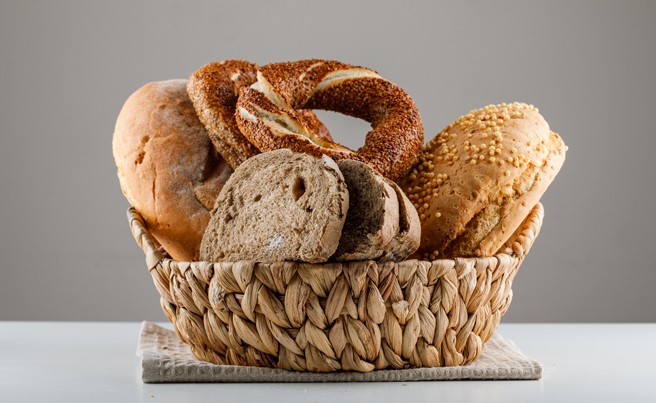
Complex carbohydrates are longer, larger molecules that make up starches, which you find in foods like rice and potatoes.
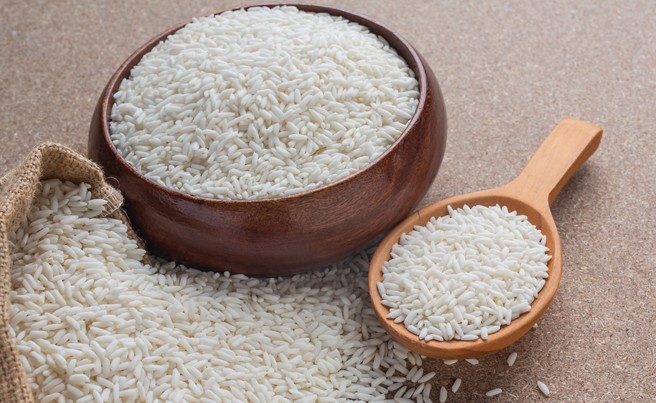
In general, for a balanced diet, you want to avoid most of the simple carbs, as they’re fast to digest and have little in the way of nutritional value beyond the energy they give you. Processed sugars, high fructose corn syrup, and other forms of added sugar commonly found in junk food are the worst offenders here.
Conversely, complex carbs are much better for you, for three reasons.
- Complex carbs digest much more slowly, which means they give you a lower level of energy spread throughout a longer time, rather than shorter bursts of higher energy.
- Many foods with complex carbs are also high in fiber, which helps keep you full and suppress your appetite, allowing you to more easily regulate your diet.
- Often, foods with complex carbs in them are also full of other micronutrients your body needs to remain buy clenbuterol online healthy, including vitamins and minerals.
Certain diet plans have spent decades convincing people that carbs are bad. And, sure, simple carbs are generally pretty bad for your health. Processed sugars are added to everything these days, and it’s rarely good to consume too much junk food.
On the other hand, you know what else are carbs? Vegetables. It’s pretty difficult to argue that vegetables are unhealthy, right?
Aligning with Your Goals
Carbs fuel the body. The ketogenic diet is based around this idea to help you lose weight; by eating zero carbs, you force your body to turn to stored fat, converting that fat into energy instead. This helps you lose weight.
If you’re running low on body fat – like if you’re used to working out and you’re relatively lean, and you want to build muscle – you need to use carbs to fuel your body. If you don’t, your body turns to fat, and your body fat percentage is already low. Without those energy stores, it turns to the next best thing: protein. Specifically, it starts to break down muscle tissues. Indeed, if you don’t eat enough carbs, you’ll be more likely to lose muscle than build it.
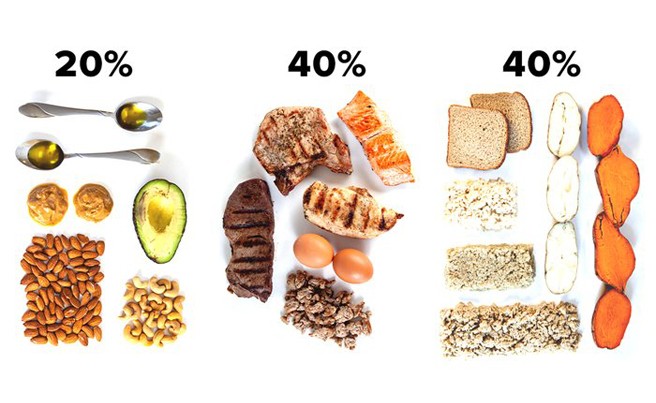
Thus, the amount of carbs you should eat depends on your goals.
Goal: lose weight. If your goal is to lose weight, you’re generally going to want to eat as few carbs as possible. A low carb diet helps stimulate your body to burn stored fat for energy rather than the sugars you’re eating, and that results in weight loss.
Goal: build lean muscle. To build muscle, you need to eat enough carbs to avoid jeopardizing the muscle you already have, while continuing to lose body fat. Eating a low level of carbs helps you fuel this process, but needs to be balanced carefully to avoid eating too much or too little.
Goal: build muscle mass. When you’re looking to build more muscle and don’t care about being lean, eating a higher number of carbs ensures that you’re fueling both your energy expenditure during workouts and your recovery.
The Risks of Too Many Carbs
So what happens if you eat too many carbs when you’re trying to build muscle?
The first risk is to your health. Carbs on their own aren’t necessarily bad, despite demonization over the decades. Eating too many carbs, though, means you’re more likely to gain weight in the form of stored fat.
Stored fat is a health risk in a variety of ways. Small amounts of it aren’t unhealthy, but larger amounts can cause insulin resistance, which leads to diabetes. It can also cause other health issues, both stemming from the presence of fat and from the weight that fat puts on your joints.
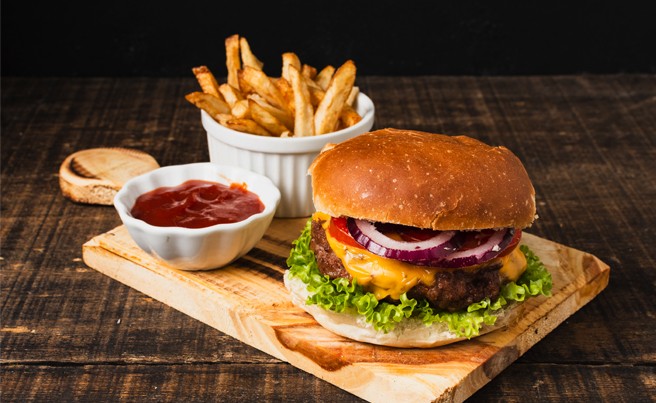
The second risk is to your behavior. Carbs are generally quite tasty, and sugar in its pure form is close to addicting. Some people call sugar the most addictive drug that’s not illegal. When you’re in the habit of eating sugary foods, you’re more likely to crave them and eat more than you should. Moderation becomes very difficult. fitness and bodybuilding experts It’s extremely easy to eat more than your daily limit and throw all of your health goals out the window.
This tends to apply mostly to simple, unhealthy carbs more than healthy complex carbs. When you’re getting your carbs from vegetables, rice, and other healthy sources, it’s less bad for you than when you’re getting your carbs from ice cream, Starbucks frappes, and candy bars.
Always remember that just because a food item is marketed as healthy doesn’t mean it is. Plenty of “healthy” granola bars and energy bars are packed with sugars to give you energy at the expense of your goals.
Picking Numbers
Again, the number of carbs you want to eat in a day depends on your goals and your current state. As such, we recommend carb levels based on your body weight and based on your goals.
Goal: lose weight while building muscle. The more you want to lose fat, the fewer carbs you should eat. A full no-carb ketogenic diet is possible here and is a good idea if your primary objective is to lose fat. If you want to build muscle while you’re losing fat, eating a small number of carbs – less than a single gram per kilogram of body weight – is fine. Enough carbs to fuel your workouts, but not so much that you pull yourself out of ketosis, is the goal. This is also known as body recomposition, and it’s somewhat difficult to accomplish.
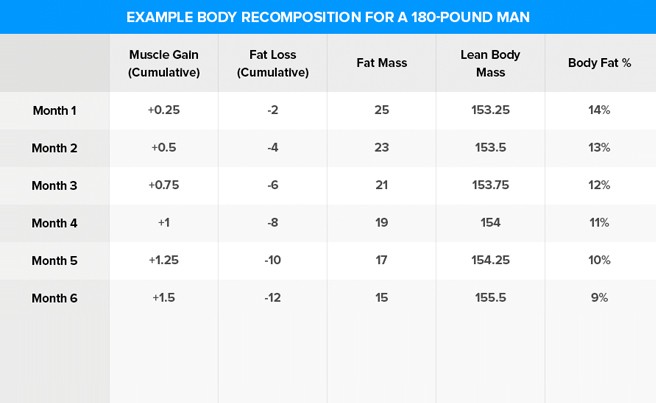
Goal: build strength and lean muscle. The goal of building muscle while reducing body fat requires straddling the line of enough carbs to fuel your workouts, but not so much that you don’t have the energy to work out. A good rule of thumb is somewhere around 1-2 grams of carbs (specifically complex carbs, not simple carbs) per kilogram of body weight. If you weigh around 80 kg (roughly 175 pounds), this means you’ll be eating 80-160 grams of carbs.
For reference, a single red potato contains around 30-35 grams of carbs, while a cup of spinach only has a single gram of carbs. You can eat a lot of vegetables and still stay within your intended carb range. On the other hand, half a cup of white rice is 20 grams of carbs, and a single slice of bread is closer to 50. Eating carb-heavy foods like bread and grains tends to use up your allotment very quickly. Likewise, a bottle of soda is nearly 40 grams of carbs on average.
Goal: build muscle mass. Building muscle mass means you want to do two things: ensure that you’re fueling your workouts and avoid any situation where your body might consume muscle for fuel. In fact, having a bit of fat in the body is important for bulking up. If you’ve ever wondered why the largest strongmen in the world are far from lean, that’s why. Having some stored fat – in the form of glycogen – helps your muscles recover, grow, and bulk up. That glycogen is crucial; without it, your muscles don’t grow as well.
Around 4-5 grams of carbs per kilogram of body weight is a good point to use as a baseline. That’s more than double the lean muscle goal, and it can sometimes be difficult to reach that number of carbs just from vegetables alone. This is where bodybuilders start to add in grains, rice, and other complex carbs for additional loading.
Adjusting Numbers
No one number serves as the perfect number of carbs to eat. You’ll need to adjust the number of carbs you consume on a weekly basis, or even a daily basis, as your body changes and your goals evolve.
For example, if your goals are changing from getting leaner to bulking up, you’ll want to increase your carb load in conjunction with your exercise. In fact, in general, as you exercise more – both in the form of high impact cardio and in heavy resistance training – you’ll want to increase your carbs.
You may also consider dedicating some percentage of your carbs to a post-workout supplement. In the hour or so after working out, your body is more receptive to both carbs and proteins to use in repairing the damage you’ve just done. By loading a supplement of fast-digesting proteins and simple carbs, you can give your body the fuel it demands to build bulk right away.
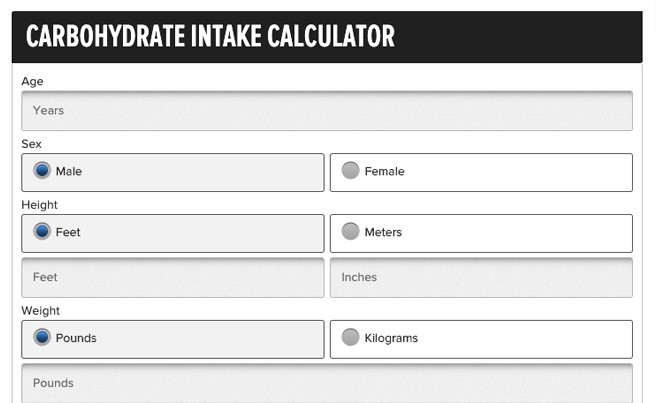
You can also use calculators like this one on a regular basis and adjust your carb intake as your weight changes. You have a surprising amount of flexibility, and you can both adjust carbs up and down as well as adjust exercise.
Bulking and Cutting
Some bodybuilders swear by a cycle of bulking and cutting. This is a cyclical adjustment in diet between two phases; the first meant to build up mass in muscle without regard for fat you put on along the way and the second for cutting that fat back out. Essentially, you get bigger, then you cut down the mass you didn’t want.
Bulking and cutting is primarily determined by your carbohydrate intake. During the bulking phase, you can consume more calories in general, and a higher proportion of complex carbs as part of the diet. You stay in this phase for around 2-3 months, or longer if your goal weight isn’t achieved yet. Once you’ve achieved a milestone, you then switch to cutting.

Cutting usually involves dialing back on the number of carbs you eat, and the calories overall to a lesser degree. You want to make sure you’re not cutting too much, because you don’t want to risk losing the muscle you spent so much time building, but you still want to lose weight in the form of stored fat. Again, this will be a personal adjustment based on your goals and your body’s state.
Calculating Your Own Numbers
If you want to determine what your numbers should look like, you can count macros and develop your own diet plan.
First, you need to calculate the number of calories you need to fuel your body overall. This should be the number of calories you’ll need when you reach your goal weight, adjusted for exercise. A sample might be “your goal weight * 12 = calories needed” when you work out for three hours per week. The more you work out, the more calories you’ll need to maintain.
Next, figure out protein intake. You’ll want, in general, one gram of protein per pound of your goal weight. One gram is about four calories, so that accounts for that number of your overall calories.
Do the same for fat. You should aim for about .5 grams of fat per pound of your target weight, though you can adjust this lower if you want room for more carbs. One gram of fat is around 9 calories, so that too is easy to calculate.
Finally, use the remainder as your carb intake. You have a total number of calories. Subtract the number of calories from protein and fat, and you’re left with your allowance of carbs. Carbs are around 4 calories per gram, so take your final calorie total and divided it by four to get your number of grams of carbs.
As you can see, there’s a lot of flexibility depending on your goals. The more mass you want to build, the larger your target weight, and the more you’ll need to eat. Load properly, and you can bulk up in no time.
Thank! Your message has been sent successfully.











Questions and answers 0